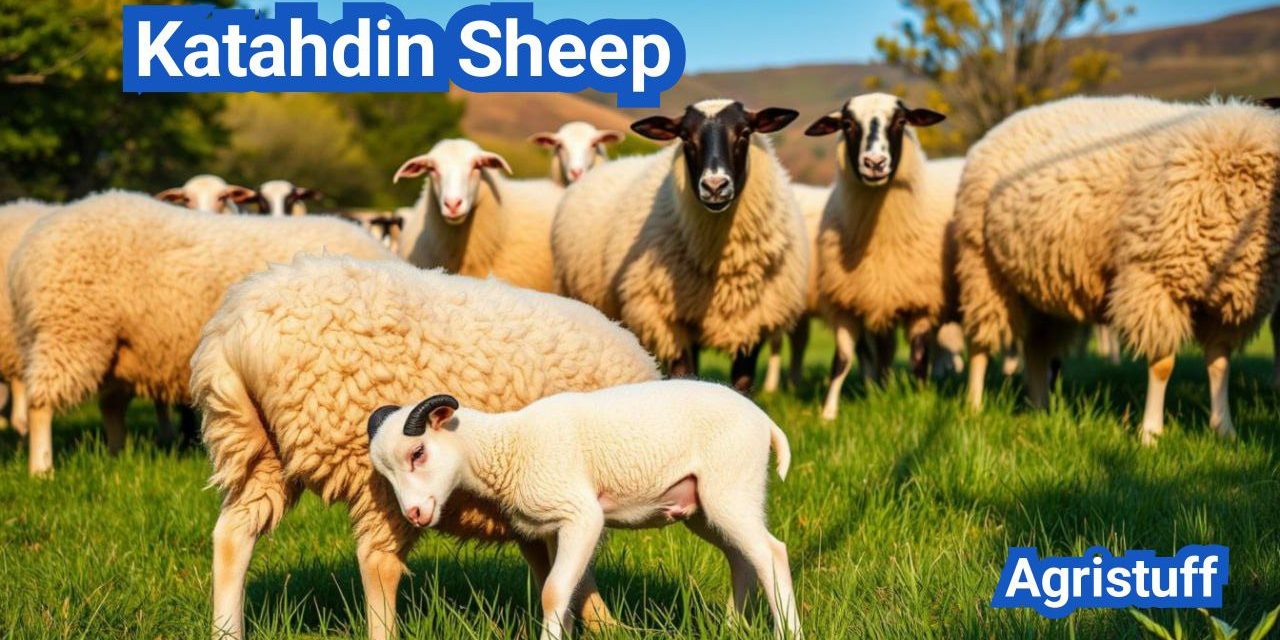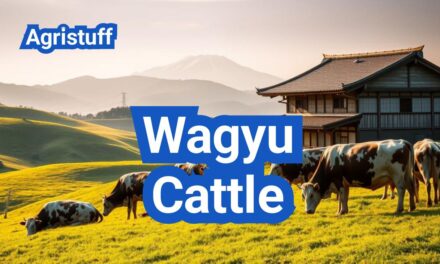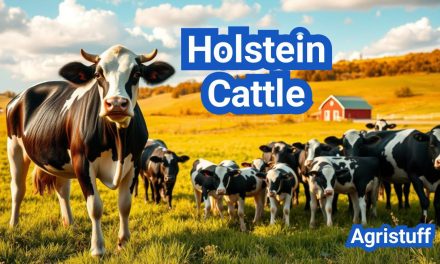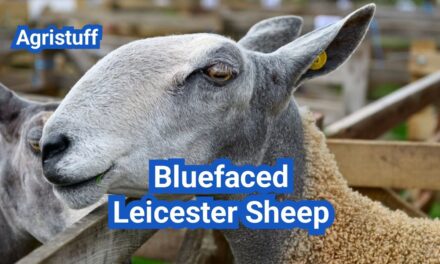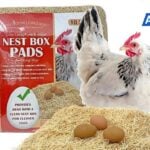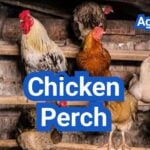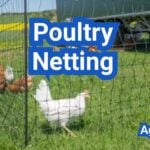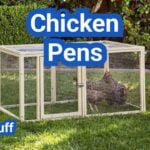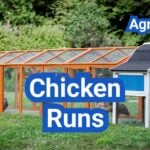The Katahdin Sheep is a modern American breed of hair sheep reared for meat, known for its hardiness and ease of care. Unlike traditional wool sheep, Katahdins grow a hair coat that naturally sheds in the spring, reducing the need for shearing.
This breed is particularly valued for its sustainable farming potential, as it requires less labor and resources compared to other sheep breeds. The quality of Katahdin lamb is also noteworthy, making it a popular choice for meat production in the USA.
Key Takeaways
- Hardy and easy to care for
- Produces high-quality lamb
- Ideal for sustainable farming practices
- Less labor-intensive compared to wool sheep
- Grows a hair coat that sheds naturally
The Katahdin Sheep Breed: A Complete Overview
Katahdin sheep, a breed renowned for its parasite resistance and ease of care, are revolutionizing the sheep farming industry. Known for their hardiness and low maintenance requirements, they have become an attractive option for farmers across the USA.
What Makes Katahdin Sheep Unique
Katahdin sheep are distinguished by several unique characteristics. They are a hair sheep breed, meaning they do not require shearing like wool breeds. This trait significantly reduces maintenance costs and labor. Additionally, their natural resistance to parasites minimizes the need for chemical treatments, making them a more sustainable choice.
Their size and weight also make them an efficient choice for meat production. Typically, Katahdin rams weigh between 180-250 pounds, while ewes weigh between 120-180 pounds. This size, combined with their fast growth rate, makes them ideal for commercial meat production.
The Rise in Popularity of Hair Sheep in the USA
The popularity of hair sheep, particularly Katahdin sheep, has been on the rise in the USA due to their numerous advantages. Farmers appreciate their low maintenance needs, as they are easy to care for and require less labor compared to traditional wool breeds.
The adaptability of Katahdin sheep to various climates and their resistance to diseases have also contributed to their growing popularity. As the sheep farming industry continues to evolve, the demand for hardy and efficient breeds like the Katahdin is expected to increase.
Origin and History of Katahdin Sheep

The development of Katahdin sheep is attributed to the innovative breeding efforts in Maine during the mid-20th century. Michael Piel, a pioneering breeder, initiated the development of this breed by crossing African Hair Sheep with various meat breeds to create a hardy, easy-care sheep.
Development of the Breed in Maine
In the 1950s and 1960s, Michael Piel began experimenting with crossbreeding programs on his farm in Maine. He aimed to combine the hardiness and parasite resistance of African Hair Sheep with the desirable meat characteristics of traditional sheep breeds. The result was a sheep that thrived in Maine’s challenging climate.
| Year | Event | Significance |
|---|---|---|
| 1950s | Initiation of Crossbreeding | Started developing hardy sheep |
| 1960s | Selection for Desirable Traits | Improved meat production |
| 1970s | Establishment of Breed Characteristics | Defined Katahdin Sheep breed |
Evolution into a Commercial Meat Breed
As the breed developed, it gained popularity for its low maintenance requirements, parasite resistance, and high-quality meat production. The Katahdin breed evolved into a commercial meat breed, sought after by farmers for its ability to thrive in various climates and management systems. Today, Katahdin sheep are recognized for their superior meat production and are an integral part of many sheep farming operations.
The Katahdin breed’s evolution into a commercial meat breed is a testament to the success of Michael Piel’s innovative breeding program. With its hardiness and adaptability, the Katahdin sheep has become a valuable asset for sheep farmers worldwide.
Physical Characteristics of Katahdin Sheep
The Katahdin sheep breed is known for its robust physical characteristics, making it a popular choice for meat production. Their distinct attributes contribute to their hardiness and adaptability.
Size and Weight Specifications
Katahdin sheep are generally medium-sized animals. Ewes typically weigh around 65 kg (145 lb), while rams can weigh about 95 kg (210 lb). This size makes them manageable for farmers and suitable for various production systems.
Color Variations and Patterns
One of the notable features of Katahdin sheep is their variety of colors and patterns. They can be found in a range of colors, from white to dark brown, and various patterns in between. This diversity in appearance adds to their appeal among farmers and consumers.
Hair Coat Properties
Katahdin sheep have a unique hair coat that sheds naturally, reducing the need for shearing. This characteristic is particularly advantageous in warmer climates, as it helps the animals regulate their body temperature and stay cool.
The combination of size, color variety, and hair coat properties makes Katahdin sheep a versatile and attractive breed for farmers. Their physical characteristics contribute significantly to their popularity in meat production.
Katahdin Sheep Lifespan and Growth

Understanding the lifespan and growth patterns of Katahdin Sheep is crucial for farmers and breeders. The longevity and growth rate of these sheep are significant factors that influence their productivity and the overall profitability of a sheep farming operation.
Average Lifespan Expectations
Katahdin Sheep are known for their relatively long lifespan. Ewes often lamb well into their 7th or 8th year, making them productive for a significant portion of their lives. On average, a well-cared-for Katahdin ewe can live between 10 to 12 years, although some may live longer with proper care and management.
Growth Chart and Development Stages
Lambs born to Katahdin ewes grow rapidly. Twins, for instance, can average about 8 pounds at birth. The growth rate of Katahdin lambs is impressive, with singles and twins reaching market weight quickly. Here’s an overview of the typical growth stages:
- Birth to Weaning (0-60 days): Lambs grow rapidly during this period, relying on their mother’s milk.
- Weaning to 6 months: After weaning, lambs continue to grow at a significant rate, especially if they are on a good nutritional plane.
- 6 months to Market Weight: Katahdin lambs often reach market weight between 6 to 8 months of age, depending on feeding and management practices.
Monitoring the growth chart and development stages of Katahdin Sheep helps farmers identify any potential issues early on and make informed decisions about their breeding and management practices.
Benefits of Raising Katahdin Sheep
The Katahdin Sheep breed has gained popularity among farmers due to its numerous benefits, including parasite resistance and ease of care. This section will explore the advantages of raising Katahdin Sheep, making them an ideal choice for many farmers.
Natural Parasite Resistance
Katahdin Sheep are known for their natural resistance to internal parasites, a trait that significantly reduces the need for chemical deworming. This resistance is crucial for sustainable farming practices, as it minimizes the environmental impact of sheep farming. Parasite resistance also improves the overall health and productivity of the flock, leading to better weight gain and reduced mortality rates.
Low Maintenance Requirements
Another significant benefit of Katahdin Sheep is their low maintenance requirements. They are easy to care for, requiring less labor and resources compared to other breeds. Their hardiness and ability to thrive on pasture with minimal supplementation make them an attractive option for farmers looking to reduce operational costs.
| Characteristic | Katahdin Sheep | Other Breeds |
|---|---|---|
| Parasite Resistance | High | Variable |
| Maintenance Level | Low | Moderate to High |
| Climate Adaptability | High | Variable |
Adaptability to Various Climates
Katahdin Sheep are highly adaptable to different climates and environments, making them suitable for farming in various regions. Their ability to withstand heat and humidity, as well as cooler temperatures, allows farmers across the United States to raise them successfully.
In conclusion, the benefits of raising Katahdin Sheep, including their natural parasite resistance, low maintenance needs, and adaptability to various climates, make them an excellent choice for farmers seeking a hardy and productive sheep breed.
How to Start a Katahdin Sheep Farm
To establish a successful Katahdin sheep farm, one must begin with thorough research and planning. This initial step is crucial as it lays the groundwork for the entire farming operation, ensuring that the farm is both productive and sustainable.
Step1: Research and Planning
The first step in starting a Katahdin sheep farm is to conduct comprehensive research. This involves understanding the breed’s characteristics, their growth patterns, and the market demand for Katahdin sheep or their products. Planning should include developing a business plan that outlines financial projections, operational strategies, and marketing plans.
Step2: Land and Facility Requirements
Katahdin sheep require adequate land and facilities. The land should be suitable for grazing, with appropriate fencing to ensure the sheep cannot escape and to protect them from predators. Facilities such as shelters, feeding areas, and health management infrastructure are also essential. Adequate pasture management is crucial to maintain soil quality and ensure a healthy grazing environment.
| Land Requirement | Description | Considerations |
|---|---|---|
| Grazing Land | Adequate pasture for sheep grazing | Soil quality, pasture rotation |
| Fencing | Sturdy fencing to contain sheep and protect from predators | Height, material durability |
| Shelters | Protection from weather conditions | Ventilation, dry bedding |
Step3: Sourcing Quality Breeding Stock
Sourcing high-quality breeding stock is vital for the success of a Katahdin sheep farm. This involves selecting sheep with desirable traits such as parasite resistance, growth rate, and fertility. Purchasing from reputable breeders and considering the genetic diversity of the flock are important factors. Breeding stock selection directly impacts the overall health and productivity of the farm.
By following these steps, prospective farmers can establish a thriving Katahdin sheep farm. It’s a journey that requires dedication, continuous learning, and a commitment to best practices in sheep husbandry.
Proper Nutrition for Katahdin Sheep

To ensure the health and productivity of Katahdin sheep, a comprehensive nutrition plan is essential. Katahdin sheep, like other livestock, require a balanced diet that meets their nutritional needs for maintenance, growth, and production.
Pasture Management Techniques
Effective pasture management is crucial for providing Katahdin sheep with high-quality forage. Techniques include:
- Rotational grazing to prevent overgrazing and maintain pasture health
- Monitoring pasture quality and adjusting grazing schedules accordingly
- Using appropriate stocking rates to avoid overloading pastures
Rotational grazing not only improves pasture utilization but also helps in reducing parasite loads by breaking the parasite cycle.
Supplemental Feeding Guidelines
While pasture provides the bulk of the diet, supplemental feeding is often necessary to ensure nutritional needs are fully met, especially during periods of poor pasture quality or high demand.
Guidelines for supplemental feeding include:
- Providing high-quality hay or silage as needed
- Using concentrates to balance the diet, particularly for pregnant or lactating ewes
- Ensuring access to clean water and mineral supplements
It’s crucial to tailor supplemental feeding to the specific needs of the flock, taking into account factors like age, reproductive status, and production level.
Breeding Katahdin Sheep: Step-by-Step Guide

Breeding Katahdin sheep is a multi-step process that includes selecting breeding stock, managing the breeding season, and implementing pasture lambing strategies. Effective breeding requires a comprehensive approach to ensure a successful lambing season.
Step1: Selecting Breeding Stock
Selecting the right breeding stock is crucial for the success of a Katahdin sheep breeding program. Farmers should look for animals with desirable traits such as high fertility, good mothering ability, and resistance to parasites. Genetic diversity should also be considered to avoid inbreeding and ensure the long-term health of the flock.
Step2: Breeding Season Management
Managing the breeding season involves introducing rams to the ewes at the right time to achieve the desired lambing period. The breeding season should be planned according to the farm’s resources and market demands. Farmers should monitor the ewes for signs of estrus and ensure that the rams are healthy and fertile.
Step3: Pasture Lambing Strategies
Pasture lambing is a common practice for Katahdin sheep, allowing ewes to lamb on pasture rather than in confinement. This approach can reduce labor costs and improve animal welfare. However, it requires careful planning to ensure that the ewes have adequate nutrition and shelter during the lambing period.
Step4: Post-Lambing Care
After lambing, it’s essential to provide proper care to both the ewes and lambs. This includes ensuring that the lambs receive adequate colostrum, monitoring for signs of illness, and providing necessary vaccinations. The ewes should also be managed to recover from lambing and prepare for the next breeding season.
| Breeding Step | Key Considerations | Best Practices |
|---|---|---|
| Selecting Breeding Stock | Genetic diversity, fertility, parasite resistance | Choose animals with desirable traits, avoid inbreeding |
| Breeding Season Management | Ram health, ewe fertility, breeding season timing | Monitor ewes for estrus, ensure ram health |
| Pasture Lambing Strategies | Nutrition, shelter, lambing supervision | Provide adequate pasture, monitor lambing |
| Post-Lambing Care | Lamb health, ewe recovery, nutrition | Ensure lambs receive colostrum, monitor for illness |
Health Management for Katahdin Sheep

Katahdin sheep are known for their hardiness, but they still require proper health management to thrive on farms. Effective health management involves understanding common health issues, implementing a suitable vaccination schedule, and adopting natural health maintenance approaches.
Common Health Issues and Prevention
Katahdin sheep can be susceptible to certain health issues, including internal parasites, foot rot, and respiratory infections. Regular monitoring and preventive measures, such as parasite control programs and vaccinations, can help mitigate these issues. “A proactive approach to health management is key to maintaining the overall health of Katahdin sheep,” as noted by sheep farming experts.
Implementing a robust parasite control program is crucial. This can include rotational grazing and the use of anti-parasitic medications when necessary.
Vaccination Schedule
Developing an appropriate vaccination schedule is vital for protecting Katahdin sheep against diseases. Common vaccinations include those for Clostridium perfringens and Clostridium tetani. Consult with a veterinarian to determine the most effective vaccination program for your flock.
Natural Health Maintenance Approaches
In addition to vaccinations, natural health maintenance approaches can play a significant role in maintaining the health of Katahdin sheep. These approaches include providing a nutritious diet, ensuring access to clean water, and maintaining a clean living environment. Rotational grazing is also beneficial as it reduces the risk of parasite infestations.
By combining these strategies, farmers can promote the overall health and well-being of their Katahdin sheep, leading to a more productive and sustainable sheep farming operation.
Katahdin Sheep Meat Production

Katahdin Sheep meat production offers a profitable opportunity for farmers due to the breed’s hardiness and meat quality. The demand for lean and naturally produced lamb is on the rise, making Katahdin Sheep an attractive choice for meat producers.
Meat Quality and Characteristics
The meat from Katahdin Sheep is known for its mild flavor and lean characteristics, making it a preferred choice among consumers looking for healthier red meat options. The breed’s genetic makeup contributes to its desirable meat quality, with a good balance of tenderness and flavor.
Key characteristics of Katahdin Sheep meat include:
- Leaner meat compared to other breeds
- Mild flavor profile
- Tender texture
Optimal Slaughter Age and Weight
Determining the optimal slaughter age and weight is crucial for maximizing the quality and value of Katahdin lamb. Generally, Katahdin lambs are ready for slaughter between 6 to 8 months of age, with an optimal weight range of 80 to 120 pounds.
| Slaughter Age (Months) | Optimal Weight Range (Pounds) |
|---|---|
| 6 | 80-100 |
| 7 | 90-110 |
| 8 | 100-120 |
Marketing Katahdin Lamb
Effective marketing strategies are essential for selling Katahdin lamb at a premium price. Highlighting the breed’s natural and lean characteristics can appeal to consumers looking for sustainable and healthy meat options. Farmers can leverage direct marketing channels, such as farmers’ markets and online platforms, to connect with customers and promote their products.
Key marketing points for Katahdin lamb include:
- Emphasizing the natural and lean qualities of the meat
- Highlighting the breed’s hardiness and low maintenance requirements
- Utilizing direct marketing channels to reach consumers
Milking Katahdin Sheep: Possibilities and Limitations

While Katahdin sheep are primarily raised for their meat, they also offer potential for milk production. This dual-purpose capability can be an attractive option for farmers looking to diversify their products.
Milk Production Potential
Katahdin sheep are not typically considered a dairy breed, but they can produce milk that can be used for various dairy products. The milk production potential of Katahdin sheep is an area of interest for farmers who want to expand their operations beyond meat production.
Studies have shown that Katahdin ewes can produce a reasonable amount of milk, especially when managed properly. Factors such as nutrition, health, and breeding practices play a significant role in determining milk yield.
| Factor | Impact on Milk Production |
|---|---|
| Nutrition | High-quality feed can increase milk yield |
| Health | Healthy ewes produce more milk |
| Breeding Practices | Selective breeding can enhance milk production traits |
Dual-Purpose Management Strategies
Managing Katahdin sheep for both meat and milk production requires careful planning. Farmers need to balance the nutritional demands of lactation with the growth requirements of lambs.
One strategy is to prioritize milk production during certain periods of the year, aligning with the demand for dairy products. This can involve adjusting lambing seasons to optimize milk availability.
“The key to successful dual-purpose management is flexibility and a deep understanding of the flock’s needs.” – Expert in Sheep Farming
Implementing rotational grazing and ensuring adequate nutrition are crucial steps in maintaining a healthy and productive flock.
By adopting these strategies, farmers can effectively manage their Katahdin sheep for both meat and milk, enhancing the overall profitability of their operations.
Stocking Rates: How Many Katahdin Sheep Per Acre

Determining the ideal stocking rate for Katahdin Sheep is crucial for maintaining a healthy and productive flock. The stocking rate, which refers to the number of sheep per acre, is a critical factor in grazing management.
A well-managed stocking rate ensures that the pasture is not overgrazed, which can lead to soil erosion and reduced pasture quality. On the other hand, underutilization of pasture can result in wasted forage and decreased overall productivity.
Determining Appropriate Stocking Density
To determine the appropriate stocking density, farmers must consider several factors, including pasture quality, climate, and the size and breed of the sheep. Katahdin Sheep are known for their hardiness and adaptability, but they still require adequate forage to thrive.
A general rule of thumb is to start with a conservative stocking rate and adjust as needed based on pasture conditions and sheep performance. “The key to successful grazing management is to monitor the pasture and adjust the stocking rate accordingly,” says an expert in sheep farming.
Implementing Rotational Grazing
One effective strategy for managing stocking rates is to implement rotational grazing. This involves dividing the pasture into smaller paddocks and rotating the sheep through them to ensure even grazing and reduce parasite pressure.
By implementing rotational grazing, farmers can increase the carrying capacity of their pasture, reduce soil erosion, and improve overall flock health. As noted by a grazing management specialist, “Rotational grazing is a powerful tool for maintaining healthy pastures and productive sheep.”
Katahdin Crosses and Hybrid Vigor
By crossing Katahdin sheep with breeds like Dorper, farmers can leverage the advantages of hybrid vigor to improve their flock’s performance. Hybrid vigor, or heterosis, is a phenomenon where the offspring of two different breeds exhibit superior qualities compared to either parent. This can result in improved growth rates, enhanced disease resistance, and better overall productivity.
Dorper-Katahdin Cross Benefits
The Dorper-Katahdin cross is particularly noteworthy for its benefits. Dorper sheep are known for their rapid growth rate and high-quality meat, while Katahdin sheep contribute their hardiness and parasite resistance. The combination results in offspring that are not only fast-growing but also resilient to environmental stresses. This crossbreeding strategy can lead to improved lambing percentages and faster turnaround times for meat production, enhancing the overall efficiency of the farm.
Other Beneficial Crossbreeding Options
While the Dorper-Katahdin cross is highly regarded, other crossbreeding options can also offer significant advantages. For instance, crossing Katahdin sheep with breeds like Suffolk or Hampshire can introduce additional genetic diversity and further enhance growth rates and meat quality. The key is to identify complementary breeds that, when crossed with Katahdin sheep, will produce offspring with desirable traits such as improved fertility, faster growth, or enhanced disease resistance.
Registering Your Katahdin Sheep
Registering your Katahdin sheep is a crucial step in maintaining the integrity and value of your breeding program. This process not only verifies the pedigree of your sheep but also ensures that they meet the breed standards set by the Katahdin Hair Sheep International Registry.
Step1: Understanding Registry Requirements
The first step in registering your Katahdin sheep is to understand the requirements set by the registry. This includes knowing the necessary documentation, such as pedigree information and breeding records. The Katahdin Hair Sheep International Registry provides detailed guidelines on what is required for registration.
Step2: Katahdin Hair Sheep International Registry Process
Once you have gathered all the necessary information, you can proceed with the registration process. This involves submitting the required documents and filling out the registration application. The Katahdin Hair Sheep International Registry has a straightforward process that can be completed online or through their office.
Step3: Maintaining Breed Standards
Maintaining breed standards is crucial for the integrity of the Katahdin sheep breed. This involves ensuring that your sheep conform to the breed characteristics and traits as defined by the registry. Regular inspections and adherence to breeding guidelines are essential for maintaining these standards.
By following these steps, breeders can ensure that their Katahdin sheep are properly registered and that they contribute to the overall quality and purity of the breed.
Sustainable Farming with Katahdin Sheep
Katahdin sheep are at the forefront of sustainable farming due to their environmental and economic benefits. Their hardiness and adaptability make them an ideal choice for farmers looking to adopt more sustainable practices.
Environmental Benefits
The Katahdin sheep breed offers several environmental benefits. Their grazing habits can contribute to land management by controlling vegetation and reducing the need for mechanical clearing. This not only helps in maintaining biodiversity but also in preventing soil erosion.
Additionally, Katahdin sheep have a low environmental footprint due to their hardiness and resistance to parasites, which reduces the need for chemical treatments and medications.
Economic Sustainability Aspects
From an economic standpoint, Katahdin sheep provide a sustainable source of income for farmers. Their ability to thrive in various conditions means lower maintenance costs and higher productivity.
The meat production potential of Katahdin sheep also contributes to their economic sustainability. They are known for their high-quality meat, which can command a premium price in the market.
Is the Katahdin Sheep Right for Your Farm?
By considering the characteristics, benefits, and management requirements of Katahdin Sheep, farmers can decide if this breed is suitable for their operation. The Katahdin Sheep breed offers several advantages, including natural parasite resistance, low maintenance requirements, and adaptability to various climates.
When choosing Katahdin sheep for your farm, it’s essential to evaluate your farm’s suitability for this breed. Factors such as pasture quality, fencing, and climate should be considered to ensure the health and productivity of the sheep.
The Katahdin Sheep breed is well-suited for farms with suitable pasture and climate conditions. Their ability to thrive in different environments makes them a viable option for farmers looking to diversify their livestock operations. By assessing your farm’s conditions and management capabilities, you can determine if Katahdin sheep are right for your farm.
Ultimately, the decision to raise Katahdin Sheep should be based on a thorough evaluation of your farm’s farm suitability and the breed’s specific needs. With proper management, Katahdin Sheep can be a profitable and sustainable addition to your farm.
FAQ
What is the Katahdin Sheep breed?
The Katahdin Sheep breed is a hair sheep breed developed for meat production, known for its hardiness and low maintenance needs.
Where did the Katahdin Sheep breed originate?
The Katahdin Sheep breed originated in Maine, USA, and was developed as a commercial meat breed.
What are the physical characteristics of Katahdin Sheep?
Katahdin Sheep are a medium-sized breed, with ewes weighing between 120-160 pounds and rams weighing between 180-250 pounds. They have a variety of colors and patterns, and their hair coat is resistant to parasites.
How long do Katahdin Sheep live?
The average lifespan of Katahdin Sheep is around 10-12 years, although some may live longer with proper care and management.
What are the benefits of raising Katahdin Sheep?
The benefits of raising Katahdin Sheep include their natural parasite resistance, low maintenance requirements, and adaptability to various climates.
How do I start a Katahdin Sheep farm?
To start a Katahdin Sheep farm, you need to research and plan, prepare your land and facilities, and source quality breeding stock.
What are the nutritional needs of Katahdin Sheep?
Katahdin Sheep require proper nutrition, including pasture management techniques and supplemental feeding guidelines, to maintain their health and productivity.
Can Katahdin Sheep be milked?
While Katahdin Sheep are primarily raised for meat, they can be milked, and some farmers manage them for dual-purpose production.
How many Katahdin Sheep can I graze per acre?
The stocking rate for Katahdin Sheep per acre depends on various factors, including pasture quality and management, and implementing rotational grazing can help optimize grazing density.
Can I crossbreed Katahdin Sheep with other breeds?
Yes, Katahdin Sheep can be crossbred with other breeds, such as the Dorper breed, to produce hybrid vigor and improve meat production.
How do I register my Katahdin Sheep?
To register your Katahdin Sheep, you need to understand registry requirements, follow the Katahdin Hair Sheep International Registry process, and maintain breed standards.
What are the environmental benefits of raising Katahdin Sheep?
Raising Katahdin Sheep can have environmental benefits, including promoting sustainable agriculture and reducing the environmental impact of sheep farming.
Are Katahdin Sheep a sustainable choice for my farm?
Katahdin Sheep can be a sustainable choice for your farm, depending on your specific circumstances, management practices, and goals.
Conclusion Of: Katahdin Sheep | Hair Sheep Breed for Meat
The Katahdin Sheep is gaining popularity across the United States and beyond as a top-tier meat breed. This hair sheep combines ease of care, hardiness, and efficient meat production. If you’re exploring sustainable and profitable sheep farming, discovering the traits of Katahdin Sheep could transform your flock.
External Link: Oklahoma State University – Katahdin Sheep Overview
Early Development of Katahdin Sheep
The story of Katahdin Sheep began in the late 1950s in Maine, where Michael Piel imported hair sheep from the Caribbean, specifically St. Croix, aiming to breed a no-wool, meat-focused animal. Through selective crossbreeding with British breeds like Suffolk and Wiltshire Horn, Piel achieved a hardy, meat-type hair sheep named after Mount Katahdin. The breed’s development emphasized easy lambing, strong maternal instincts, and minimal fleece, culminating in the launch of a formal registry in the mid-1980s.
External Link: Katahdin Hair Sheep International – Breed History
Physical Traits That Matter
Katahdin Sheep are medium-sized and well-muscled, with mature ewes averaging 120–160 pounds and rams 180–250 pounds. Their hair coats offer several advantages:
- No shearing required—they shed naturally in spring
- Adapt well to a range of climates, from Maine winters to Southern heat
- Hair coats produce meat with mild flavor—no lanolin influences
These traits make the Katahdin Sheep ideal for low-maintenance systems and pasture-based operations.
External Link: Livestock Conservancy – Katahdin Sheep Traits
Exceptional Reproductive Performance
Reproductive efficiency is one of the breed’s strengths. Katahdin Sheep have early puberty and year-round fertility, with ewes often birthing twins and occasionally triplets or quadruplets. With proper management, many flocks achieve a 200% lamb crop—meaning two lambs per ewe each year. Lambs are vigorous from birth, which enhances survivability even in pasture-based lambing systems.
External Link: USDA – Sheep Reproduction Efficiency
Adaptive Hardiness and Low Maintenance
From brisk Northern winters to humid Southern summers, Katahdin Sheep excel in diverse climates. Their key advantages:
- Natural parasite resistance compared to wool breeds, reducing deworming needs
- No shearing, saving time and labor
- Hardy and docile temperament—easy flocking and handling
These factors cut both operational costs and management complexity for U.S. producers.
External Link: University of Maine – Hair Sheep Adaptability
Meat Quality and Marketability
Katahdin Sheep produce lean, flavorful meat ideal for a variety of markets:
- Carcasses are lean, well-muscled, and comparable to other medium-size breeds
- Lamb flavor is mild and tender, excellent for restaurant and retail markets
- Meat quality supports both conventional and specialty-lamb pricing
These qualities make Katahdin Sheep a smart choice for farmers targeting quality meat production and consumers seeking grass-fed and pasture-raised lamb.
External Link: American Lamb Board – Meat Quality Standards
Pasture and Land Management Benefits
If you’re managing brush, invasive plants, or woodland regeneration, Katahdin Sheep are a natural ally. They thrive on diverse forage including goldenrod, blackberry, and knotweed. Farmers have observed improved pasture health and faster land recovery after grazing Katahdin Sheep, thanks to their grazing patterns and adaptability.
External Link: NRCS – Sustainable Grazing Practices
Leadership and Industry Support
Multiple organizations support the rise of Katahdin Sheep, enhancing their reach across the U.S.:
- Katahdin Hair Sheep International (KHSI) founded in 1985, now tracks performance, registries, and promotes research
- National Sheep Improvement Program (NSIP) endorses Katahdins for carcass quality and sustainable traits
In 2020, KHSI reported nearly 173,000 sheep registered and over 1,500 members across North America. This places Katahdin Sheep among the top six U.S. sheep registries by animal numbers.
External Link: Katahdin Hair Sheep International – Registry Data
Why U.S. Farmers Are Switching
Here’s why many U.S. sheep producers are shifting to Katahdin Sheep:
- Low input – no shearing, reduced health treatments, easy lambing
- High productivity – prolific lambing and fast-growing lambs
- Adaptability – thrive in varied climates and forage systems
- Market advantage – premium meat and consumer appeal
These advantages make Katahdin Sheep ideal for sustainable operations seeking profitability with fewer management challenges.
External Link: Sustainable Agriculture Research & Education (SARE) – Hair Sheep Profitability
Getting Started with Katahdin Sheep
For farmers and homesteaders:
- Join KHSI to access registries, performance metrics, and breeders
- Look for Katahdin flocks within your climate zone—availability varies coast to coast
- Focus on certified flocks: parasite resistance, hair coats, and strong maternal performance are key
- Start small—10–20 breeding ewes are enough for evaluating herd fit and market viability.
External Link: Beginning Farmers – Sheep Farming Guide
Summary of Key Strengths
- No shearing: natural shed saves time & money
- Parasite resistance: less deworming, healthier flock
- Easy lambing & maternal care: strong survival and vigor
- Efficient meat production: lean, mild-flavored lamb
- Adaptable & docile: ideal for diverse systems and climates
These traits establish Katahdin Sheep as smart choices for modern U.S. meat producers.
External Link: Penn State Extension – Sheep Breed Selection
Final Thought
Katahdin Sheep combine ease of care with efficient meat production and strong adaptability. For U.S. farmers focused on sustainable, low-input systems—whether pasture-based, forested, or conventional—this hair sheep breed offers real potential. With growing industry support and a rising consumer market for quality lamb, now is an ideal time to explore Katahdin Sheep as a cornerstone of your farming enterprise.
External Link: USDA National Agricultural Library – Sheep Production

